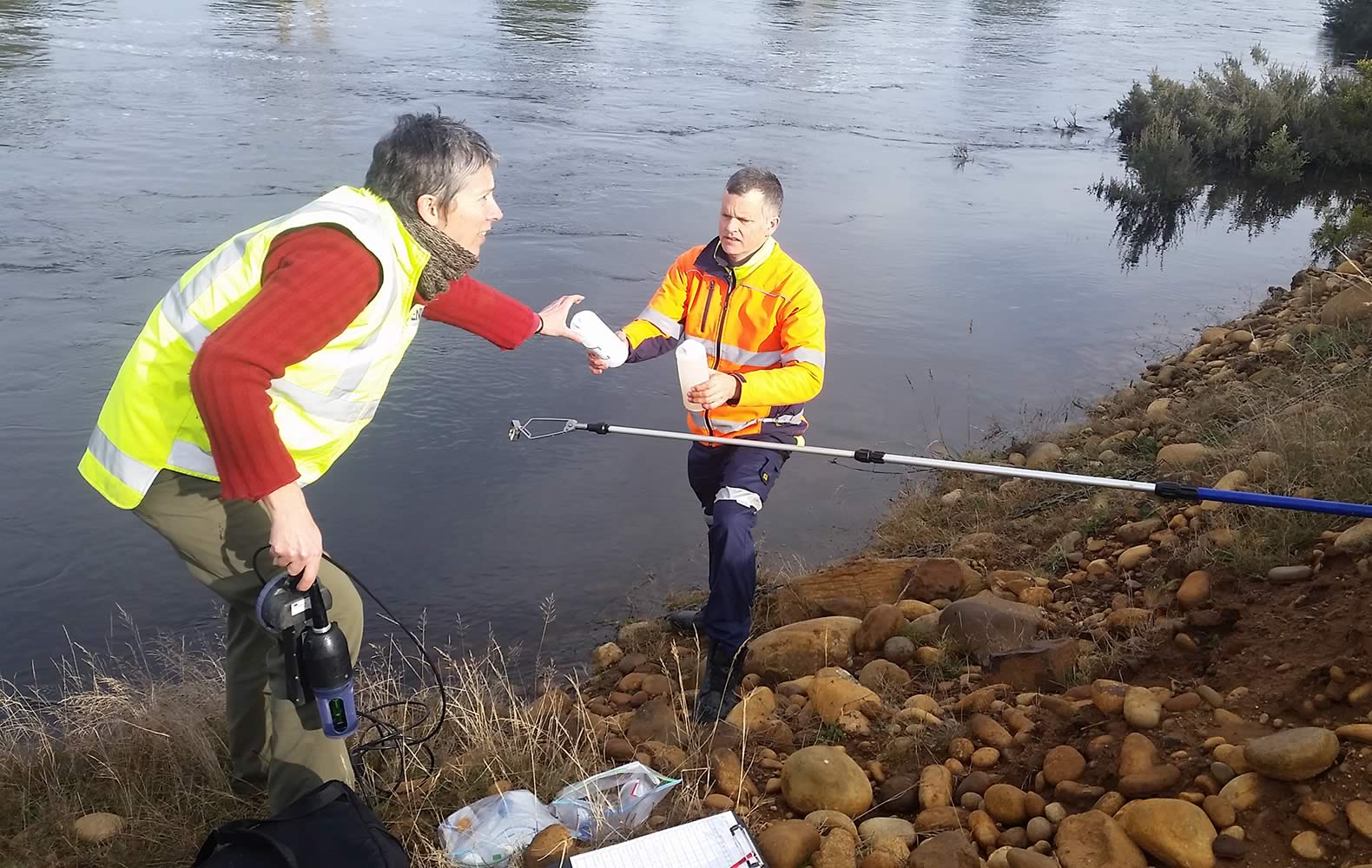Nutrient sources in the River Derwent

Monitoring the River Derwent
Image: Derwent Estuary Program
A two-year monitoring program of River Derwent water quality is providing baseline information for managing water quality now and in the future. The monitoring revealed that nutrients are predominately derived from aquaculture during summer and from agricultural sources in winter.
The monitoring trial was initiated by the Derwent Estuary Program in cooperation with TasWater, Hydro Tasmania and NRM South and was conducted in the River Derwent above New Norfolk and in its tributaries including the Plenty, Styx, Tyenna, Clyde, Broad, Dee, Ouse and Florentine Rivers.
Monthly water samples were taken from 14 sites in 2016 and 2017 and aligned with a monitoring program last conducted in 1998. In 1998, the water quality of the River Derwent was good however there was an observed increase in nutrients in the Derwent estuary near New Norfolk, plus extensive summer algal blooms in the area between New Norfolk and Granton. This prompted the DEP and other organisations to extend our monitoring program above the estuary.
Water quality across the catchment varied considerably over the two-year sampling period, with lowest nutrient concentrations observed in the upper catchment (below Wayatinah) and Broad River, both of which receive run-off from largely natural, forested catchments.
Elevated dissolved nitrogen and phosphorus levels were observed in both agriculture dominated catchments (e.g. the Ouse, Clyde) and those receiving effluent from large fish hatcheries (e.g. Florentine and Tyenna). The timing of maximum nutrient levels was interesting, with levels from agriculture-dominated catchments at a maximum during winter months, while fish hatchery dominated tributaries showed maximum levels during summer months.
The security of fresh water from the River Derwent for drinking, farming, industry and the natural environment is essential, and this report is a first step in informing best practice management of the river. Based on the report recommendations, our next steps will involve working with our stakeholders, including representatives of aquaculture and agriculture, to identify immediate actions to reduce nutrients in the river. To measure the effectiveness of management we are also keen to continue and refine the monitoring program, as well as develop research plans to improve our knowledge of this complex environment.
Monday 30 July 2018
